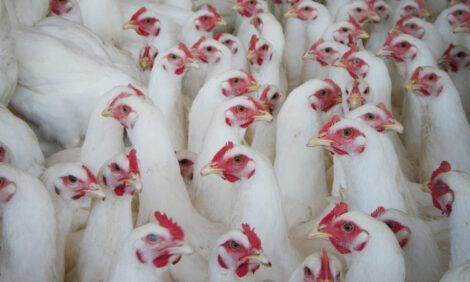



Maximising performance using the broiler breeder’s own agenda
By Ron Meijerhof, Senior Technical Specialist, Hybro B.V. - The technical performance of broiler breeders is influenced significantly by their natural behaviour.Technical results will be adversely affected, for example, if the birds don’t want to enter the laying nest, mate or they are unable to eat all at the same time – regardless of the genetic potential of the birds. So to manage our breeders for optimum performance, it helps to understand the ‘behaviour basics’ that are incorporated into the daily schedule of a chicken.
Creatures of habit
Broiler breeders don’t perform their activities randomly throughout the day. They have a schedule, the most important aspects of which revolve around egg laying and mating, which we must respect through our management practices.
Egg laying
Laying begins about one hour after the light goes on in the morning, with the majority of eggs being produced in a period of approximately six hours. This means that throughout that six hour period, all birds must have unhindered access to the nests.
A broiler breeder will often occupy the nest for about 45 minutes to lay her egg, with around 20-25 minutes to prepare for laying, and another 20-25 minutes to enjoy the result. In warm conditions, birds may occupy the nest for even longer.
If we consider the fact that not all birds lay every day, and that not all nests are occupied 100 per cent of the time, we can calculate at least one hour of nest occupancy for every egg laid, in a laying period of about six hours. This means that at peak production, we need one individual nest per five or maximum six birds.
In a community nest, each laying bird will occupy around 15cm width in the nest – so approximately six birds per metre of nest space. And if each place is occupied for one hour, we can expect to place 35-40 birds per metre of nest length during the six hour laying period. Placing more birds is likely to be counter-productive, as this will make it difficult for some of the birds to find a free space.
Mating
Mating is, of course, a key feature of the breeder’s daily schedule, occurring mainly during the last four hours of light – and with good reason. If mating happened in the morning, the laying of eggs would obstruct mating behaviour, and the outgoing egg would expel incoming semen.
Males are most active during this part of the day, so we must attract the females to the scratch area during this time, as well as observing the mating behaviour of the males, to ensure that they are neither too aggressive nor too docile.
Feeding and drinking
With the first six-seven hours and the last four hours of a 16 hour light so engaged, we are left with only five-six hours during which to plan eating and drinking.
If we provide feed during egg laying or mating, we are effectively asking the birds to choose between staying hungry to use a nest or mate, or to take feed with the risk of producing a floor egg or avoiding mating. And some of our breeders will choose to eat!
Depending on the flock and the feeding system, birds need approx. two hours to eat and four to drink. This means that we should start giving feed and water seven-eight hours after the light goes on, to avoid any conflict with laying and mating behaviour.
Another advantage of feeding after laying, is that the calcium in the feed becomes available for the bird when shell is formed, mainly during the night.
However, if we feed seven-eight hours after lights on, digestion will occur during the warmest hours of the day. This is not a problem in moderate climates, but the heat production associated with digestion can cause problems for birds in hot climates – where to ensure that feeding doesn’t interfere with laying, we must compensate by feeding as early as possible.
Our breeder flocks have a very straightforward approach to life, and therefore to what they need and expect from us. By understanding their behaviour and meeting their expectations, we can ensure that our birds make choices that are in our best commercial interests.
May 2007











